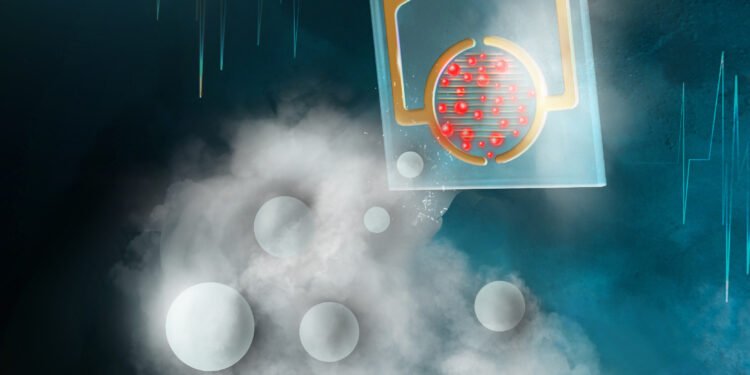Large pieces of plastic can break down into nanoparticles that often end up in soil and water. Perhaps less well known is that they can also float in the air. It is not clear how nanoplastics affect human health, but animal studies suggest they are harmful. As a step towards better understanding the spread of nanoplastics in the air, scientists have developed (Identification of nanoplastics in the air) a sensor that can detect these particles and determine the types, amounts and sizes of plastics using colored carbon dots.
The scientists will present their results today at the fall meeting of the American Chemical Society (ACS). ACS Fall 2022 is a hybrid meeting held virtually and in person August 21-25, with on-demand access August 26-September 26. 9. The meeting had almost 11,000 presentations on a wide range of scientific topics.
“Nanoplastics are a big problem when they’re in the air you breathe, they get into your lungs and they can cause health problems,” said Raz Jelinek, Ph.D., the project’s principal investigator. “A simple, low-cost detector like ours can have huge consequences, and once people are alerted to the presence of nanoplastics in the air, they can act.”
Millions of tons of plastic are produced and thrown away every year. Some plastic materials slowly break down during use or after disposal, polluting the environment with micro- and nano-particles. Nanoplastics are so small – typically less than 1 µm in diameter – and light enough that they can even float in the air, which people can then unknowingly inhale. Therefore, it is useful to know the level of air pollution of nanoplastics in the environment.
Previously, Jelinek’s research group at Ben-Gurion University of the Negev developed an electronic nose, or “e-nose,” to monitor the presence of bacteria by adsorbing and concentrating a unique combination of molecules on the gas vapors that release them. The researchers want to see if the same carbon dot-based technology can be adapted to create a sensitive nanoplastic sensor for continuous environmental monitoring.
Carbon dots are formed when a starting material with a large amount of carbon, such as sugar or other organic substances, is heated for several hours at moderate temperatures, Jelínek said. This process can also be done with a regular microwave oven. When heated, the carbon-containing material turns into colored and often fluorescent nanometer-sized particles called “carbon dots.” And by changing the starting material, the carbon dots can have different surface properties that attract different molecules.
To create the bacterial e-nose, the team deposited thin layers of different carbon dots on tiny electrodes, each about the size of a fingernail. They use interconnected electrodes that have two sides with alternating ridge-like structures. An electric field is created between the two sides and the stored charge is called capacitance. “If something happens to the carbon dots – whether they adsorb gas molecules or pieces of nanoplastic – then there will be a change in capacity that we can easily measure,” says Jelínek.
The researchers then tested the proof-of-concept sensor for nanoplastics in the air, selecting carbon dots that adsorb common types of plastic — polystyrene, polypropylene, and poly(methyl methacrylate). In the experiments, plastic nanoparticles are aerosolized, causing them to float in the air. And when electrodes coated with carbon dot films were exposed to airborne nanoplastics, the team observed signals that differed for each type of material, Jelinek said. Since the amount of nanoplastics in the air affects the intensity of the generated signal, Jelínek added that currently the sensor can report the number of plastic-type particles above or below a certain predetermined concentration limit. Furthermore, when polystyrene particles of three sizes – 100 nm wide, 200 nm wide and 300 nm wide – are aerosolized, the sensor signal intensity is directly related to the particle size.
The team’s next step is to see if their system can identify the types of plastics in mixtures of nanoparticles. Just as the combination of carbon dots in a bacterial e-nose distinguishes between gases of different polarity, Jelinek says it’s likely that the nanoplastic sensor can be modified to distinguish other types and sizes of nanoplastics. With the ability to detect different plastics based on their surface properties, nanoplastic sensors will be useful for tracking these particles in schools, office buildings, homes and outdoors, he says.





































